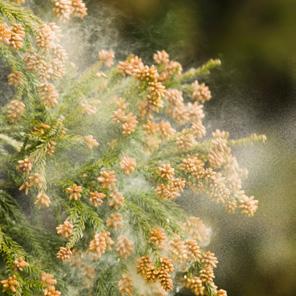About Seasonal Pollen Allergies People with allergic rhinitis may have symptoms that get worse during one season over another. Why? Different types of pollen allergens peak at different times of the year. In the spring, tree pollen is more common. In the fall, weed pollen peaks.
SPRING
FALL
Tree pollen causes most springtime seasonal allergies. Tree pollen season can start as early as January in some states and can last through July. Tree pollen is smaller than many other types of pollen. This allows the wind to carry it for miles, finding its way into sinuses, lungs, and eyes, making it hard to avoid.
When it comes to fall pollen allergies, ragweed pollen is the worst offender. Ragweed allergy is the most common weed pollen allergy. One ragweed plant can produce billions of light, dry pollen grains, which can then travel for miles. Other weed pollens can cause symptoms as well.
The most common tree pollen culprits are:
These plants are responsible for causing most pollen allergy symptoms in the fall:
• Alder • Ash • Aspen • Beech • Birch • Box elder • Cedar • Cottonwood • Elm
• Hickory • Mountain elder • Mulberry • Oak • Olive • Pecan • Poplar • Willow
• Burning bush • Cocklebur • Lamb’s-quarters • Mugwort • Pigweed
• Ragweed • Russian thistle • Sagebrush • Tumbleweed
allergycapitals.com
4
©2021 Asthma and Allergy Foundation of America


